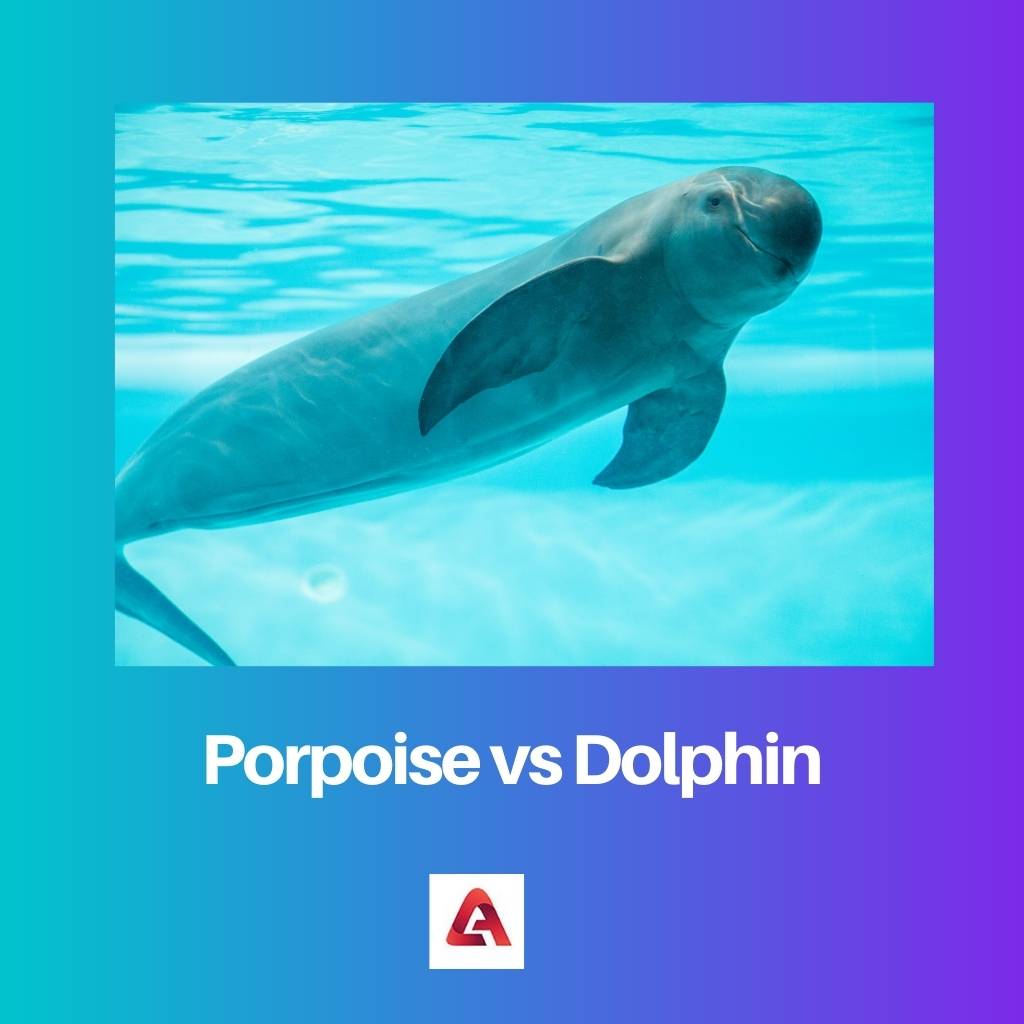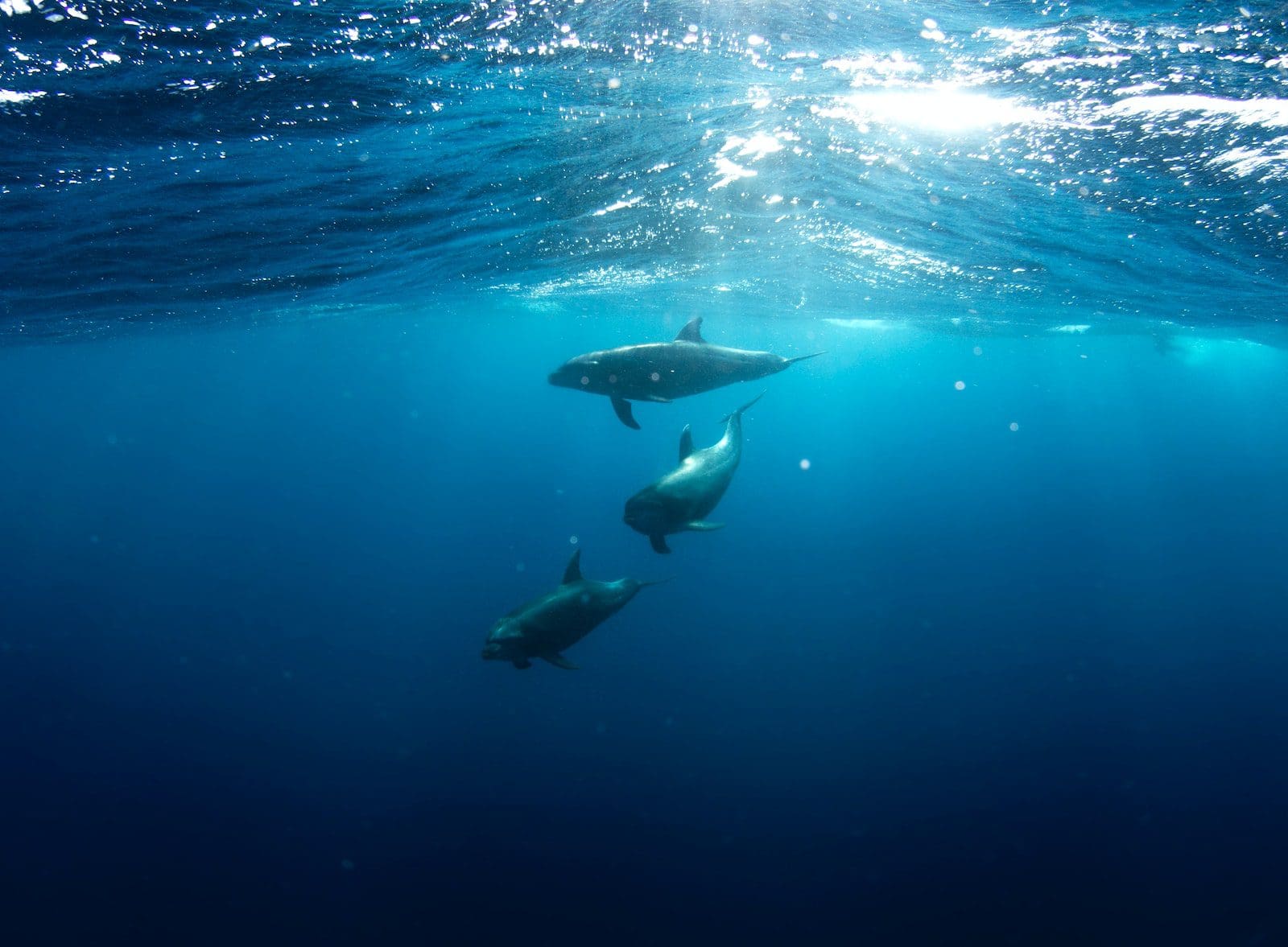Dolphins are well-known marine animals. Dolphins are loved by all, as it is shown that they like to socialize with the public. Porpoises are normally not seen as they are shy towards people and are specifically found in the Pacific Ocean. Both animals have remarkable, intelligent memory.
Key Takeaways
- Porpoises and dolphins are marine mammals with similar appearances but belong to different families.
- Dolphins are larger and have longer snouts than porpoises.
- Porpoises are found in colder waters, while dolphins are found in warm and cold waters.
Porpoise vs Dolphin
The difference between Porpoise and Dolphin is Porpoise grow up to 1.5 to 2.5 m in length, whereas Dolphin grows up to 1 to 6m in length. Porpoise does not like to socialize like dolphins. Porpoise has shy nature, but Dolphin has social skills, due to which they like to meet people.

Porpoises are animals that are only found in the Pacific Ocean. They eat squid and fish. They are very shy, due to which they cannot be seen. Their dorsal fin is triangular. They grow up to 2.5 m long. They are intelligent and have a remarkable memory.
Dolphin is a marine animal. They have high social skills. They are highly intelligent. Their dorsal fin is curved. They can be found in any ocean. They eat fish and squid. They can grow up to 6m long. They belong to the Animalia kingdom. They belong to the Mammalia class of animals.
Comparison Table
| Parameters Of Comparison | Porpoise | Dolphin |
|---|---|---|
| Height | 1.5 to 2.5m | 1 to 6m |
| Teeth | Flattened | Conical |
| Social value | Less | More |
| Region | Pacific Ocean | Ocean |
| Dorsal fin | Triangular | Curved |
| Feed | Fish, squid | Fish, squid, and mammals |
What is Porpoise?
Porpoise is an aquatic animal. It is a mammal. They belong to the family of Phocoenidae. They are similar to belugas and narwhals. They are not similar to the dolphin in the structure of the body.
There are seven species of porpoise. They have flattened and spade-shaped teeth. Thus porpoise is similar to the dolphin.
They do not have a good beak. The closest member is hippopotamuses. They can only be found in marine regions. They can be found in multiple areas like rivers, shelf waters, and oceans. They don’t have the habit of socializing. They have a shy attitude. They are mostly found at a length of 2.5m.
They mostly eat squid and fish. They put out ultrasonic sounds. They produce mostly during the summer and spring seasons. They do not live in large groups. They do not have any social groups. To this date, the porpoise is hunted, but there has never been any successful attempt.
Many species of porpoise are on the verge of extinction. The baiji group is already extinct. The proposal is kept for research and help in captivity and some are even kept for public display. The population is very less and can be near to a hundred only in a particular type of species.

What is Dolphin?
This is the most popular aquatic animal all around the world. The closest members are river dolphins, oceanic dolphins, brackish dolphins, and Chinese river dolphins. There are many species, all-around forty species of dolphins. They are mostly six meters in height. Dolphins can be found in any ocean.
Dolphins can leap about 30 feet. Their bodies are streamlined in shape. There are many species in which the species can exhibit sexual dimorphism. Males dolphins are quite larger and larger in height than female dolphins. They do not have any exact location as they can be found somewhere.
Their teeth have a conical shape. The teeth help them to catch their target. The target can be fast in moving, but the teeth help them to catch hold of the prey. The skin has a large amount of fat because they are found in rivers and oceans in which the water is cold.
The skin fat helps them to stay warm in the cold water. The layer of fat is called blubber. The species favour different locations. Few species favour warm tropical waters, but few species favour cold climate waters. They eat only fish and squid. Calves are born during the summer or spring season.

Main Differences Between Porpoise and Dolphin
- Porpoise is found 1.5 to 2.5 m in length whereas Dolphins are found 1 to 6 m in length.
- The teeth of porpoises are flattened, whereas Dolphins have conical teeth.
- Porpoise has shy nature, whereas Dolphins like to socialize.
- Porpoises can be seen in the Pacific Ocean particularly, whereas dolphins can be found in any ocean.
- Porpoises have triangular dorsal fins, whereas dolphins have curved dorsal fins.
- Porpoise eat fish and squid, whereas Dolphin eats marine mammals, fish, and squid.

- https://asa.scitation.org/doi/abs/10.1121/1.1903305
- https://www.degruyter.com/document/doi/10.1525/9780520913547/html

The information provided about porpoises and dolphins is both educational and insightful, shedding light on their unique characteristics and environmental significance.
I couldn’t agree more, the article is a great source of knowledge about these fascinating marine mammals.
The detailed explanations of porpoises and dolphins are presented in an accessible and informative manner, making it an excellent read for anyone interested in marine life.
I completely agree, the article is an exemplary resource for understanding the distinctions between porpoises and dolphins.
The article’s focus on the ecological significance and conservation status of porpoises and dolphins adds further depth to its value as an educational piece.
This article effectively communicates the differences and ecological roles of porpoises and dolphins, contributing to a better understanding of these fascinating marine creatures.
The section outlining the main differences between porpoises and dolphins serves as a useful summary of the key points discussed throughout the article.
I share the same sentiment, the article offers valuable insights into the unique features and behaviors of porpoises and dolphins.
The article’s detailed descriptions and ecological comparisons of porpoises and dolphins provide a comprehensive overview of these remarkable marine mammals, and their importance in marine ecosystems.
The thorough descriptions of porpoises and dolphins, along with the comparison table, offer a comprehensive understanding of their differences and similarities in a clear and engaging way.
Absolutely, the article is a fantastic resource for anyone interested in learning more about porpoises and dolphins.
I found the information about the social behaviors and habitats of porpoises and dolphins particularly intriguing and well-explained.
The comparison table and the detailed descriptions of porpoises and dolphins are very helpful in understanding the differences between the two marine mammals.
The article’s focus on the distinctions and ecological roles of porpoises and dolphins, combined with its clear and informative writing style, makes it a valuable read for anyone interested in marine life.
Absolutely, the article’s emphasis on ecological significance and conservation efforts enriches its overall contribution to understanding porpoises and dolphins.
The article’s inclusion of information about the conservation efforts for porpoises, as well as the challenges they face, provides a well-rounded perspective on the topic.
This article provides a comprehensive explanation of the differences between porpoises and dolphins, as well as their individual characteristics, habitats, and behaviors.
I agree, the article presents a wealth of information in a clear and concise manner.
The article effectively highlights the distinct features and behaviors of porpoises and dolphins, making it a valuable resource for understanding these marine animals.